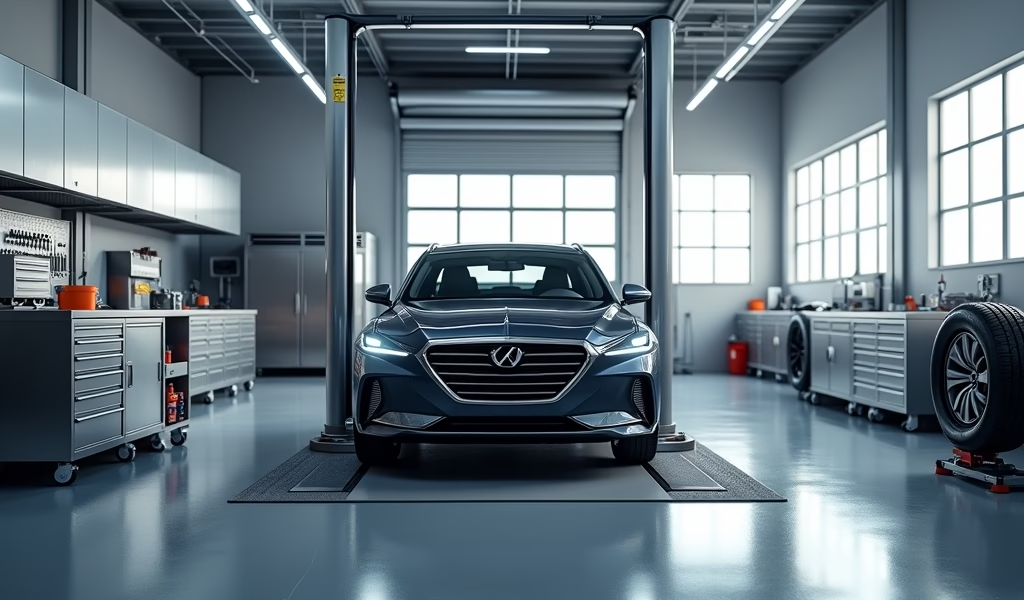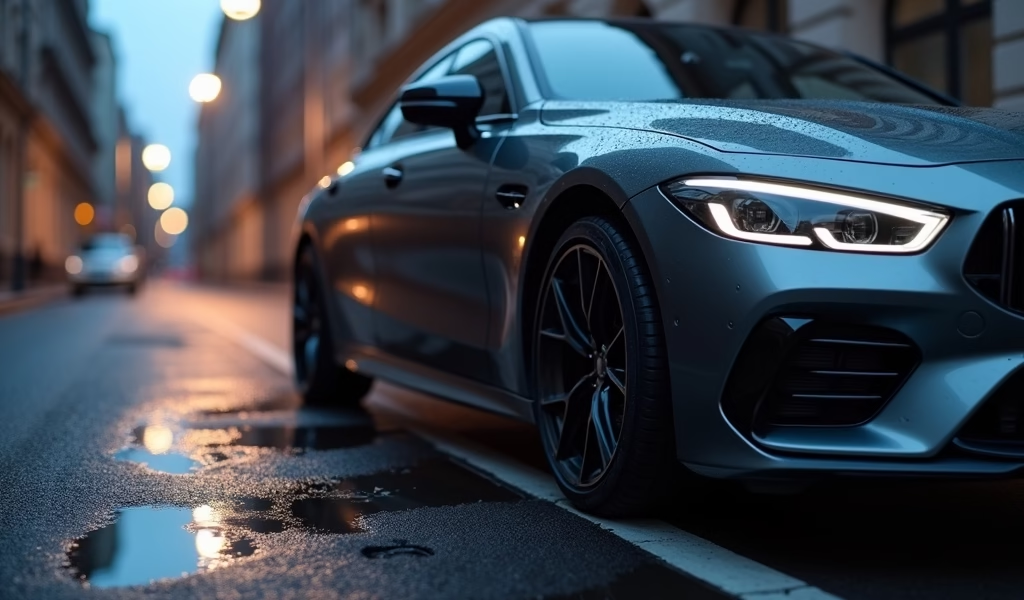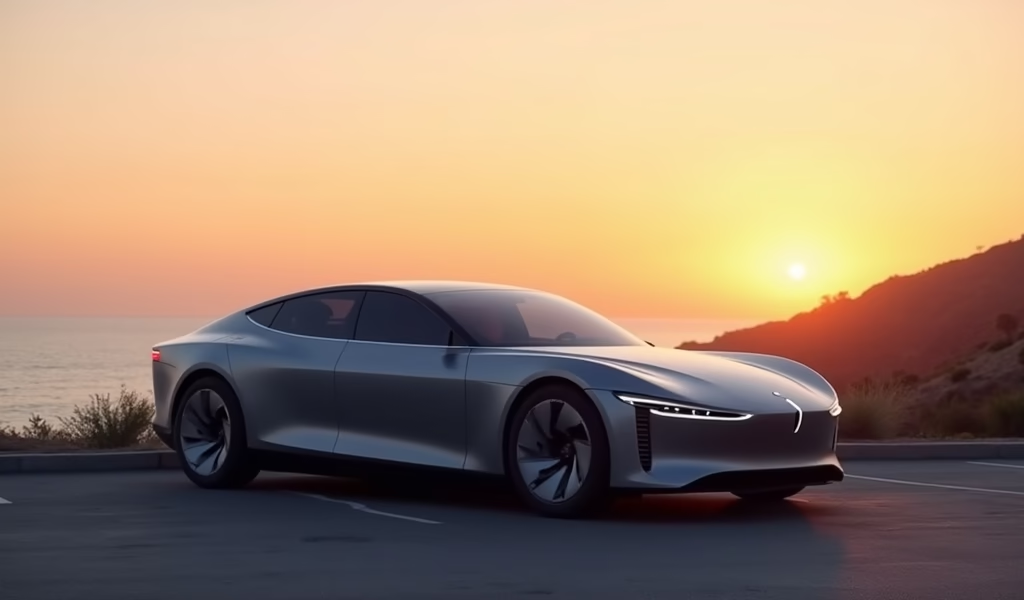Overview
This article provides seven essential care tips for vehicles from newest car brands, covering regular maintenance, understanding tech features, eco-friendly practices, appropriate fuel choices, warranty management, performance optimization, and long-term investment protection. The guide emphasizes that modern vehicles require more sophisticated care than older models, with particular attention to software updates, proper maintenance documentation, and leveraging advanced features to maximize vehicle longevity and performance.
Table of Contents
- Introduction
- Regular Maintenance: The Foundation of Longevity
- Understanding Modern Tech Features
- Eco-Friendly Practices for New Vehicles
- Premium Fuels and Lubricants: Are They Worth It?
- Maximizing Warranty Coverage
- Performance Optimization Strategies
- Conclusion: Protecting Your Investment
- Frequently Asked Questions
Introduction
When you drive off the lot in a vehicle from one of the newest car brands, you’re not just purchasing transportation—you’re investing in cutting-edge technology, innovative design, and next-generation engineering. As a master technician with over two decades under the hood, I’ve watched automotive technology evolve at breathtaking speed. Today’s newest models from emerging manufacturers pack more computing power than early space shuttles, with systems that would have seemed like science fiction just years ago. But here’s the truth many dealerships won’t tell you: these sophisticated machines require equally sophisticated care. The maintenance approaches that worked for your parents’ vehicles simply won’t cut it anymore. In this comprehensive guide, I’ll walk you through seven essential care tips specifically tailored for these automotive newcomers, ensuring your investment remains pristine and performs optimally for years to come.
Regular Maintenance: The Foundation of Longevity
The cornerstone of proper care for vehicles from newest car brands begins with understanding that preventative maintenance isn’t just recommended—it’s absolutely critical. Unlike established manufacturers with decades of real-world data, emerging brands are still building their reliability profiles. This means staying ahead of potential issues becomes even more important.
First and foremost, adhere strictly to the manufacturer’s maintenance schedule—but consider it the minimum, not the ideal. These schedules are often designed for “average” driving conditions, which rarely match real-world usage. For vehicles from newer manufacturers, I typically recommend more frequent oil changes during the first 30,000 miles—every 5,000 miles rather than the often-suggested 7,500-10,000 mile intervals. This gives you valuable early insight into how the engine is breaking in, potentially revealing issues before they become serious problems.
Additionally, pay special attention to software updates. Unlike traditional vehicles where mechanical components were the primary concern, newer brands integrate sophisticated software systems controlling everything from engine timing to climate control. According to Car and Driver research, missing critical software updates can lead to performance degradation of up to 15% in some systems. Many newest car brands now offer over-the-air updates, but don’t assume they’re automatic—verify that your vehicle is receiving these critical improvements.
Furthermore, consider finding an independent mechanic with specific training or experience with your particular brand. While dealership service centers have direct manufacturer support, they often come with premium pricing. A good independent mechanic who’s invested in learning the nuances of emerging brands can provide excellent service at more reasonable rates. Just be sure they have access to the proper diagnostic equipment for your specific make and model.
Understanding Modern Tech Features

The newest car brands are revolutionizing the driving experience with unprecedented technology integration. However, these advanced features require proper understanding to maximize their benefits. Taking time to thoroughly learn your vehicle’s technology suite isn’t just about convenience—it directly impacts safety, efficiency, and longevity.
Begin by familiarizing yourself with your vehicle’s driver assistance systems. Many drivers of newer brands are surprised to learn they’re only utilizing a fraction of their vehicle’s capabilities. Modern adaptive cruise control, for instance, doesn’t merely maintain speed but can recognize traffic patterns, adjust for weather conditions, and even learn driver preferences over time. Properly configured, these systems reduce driver fatigue while simultaneously decreasing wear on braking systems by up to 30% through more gradual deceleration patterns.
Next, take advantage of your vehicle’s diagnostic capabilities. Most newest car brands include sophisticated onboard diagnostics accessible through the infotainment system or companion smartphone apps. These interfaces provide real-time data on dozens of vehicle systems, from battery health to tire pressure variations. Setting up regular diagnostic checks—I recommend monthly at minimum—allows you to spot developing issues before dashboard warning lights appear. For instance, gradual battery voltage decreases might indicate charging system issues weeks before they cause starting problems.
Additionally, many car enthusiasts find that newer vehicles include customization options for driving dynamics. Parameters like throttle response, steering sensitivity, and suspension settings can often be adjusted to match your driving style. While factory defaults work well for average use, personalized settings can enhance both driving enjoyment and vehicle longevity by better matching the mechanical systems to your specific usage patterns.
Eco-Friendly Practices for New Vehicles
The newest car brands have placed environmental consciousness at the forefront of their engineering philosophy. Whether you’ve purchased a fully electric vehicle, a hybrid, or an internal combustion engine with advanced efficiency features, adopting complementary eco-friendly practices enhances both environmental benefits and vehicle performance.
For electric and plug-in hybrid vehicles, understanding charging behavior significantly impacts battery longevity. Contrary to popular belief, maintaining a battery between 20% and 80% charge typically extends its useful life far more effectively than regularly charging to 100%. According to research from the U.S. Department of Energy, this practice can extend battery lifespan by up to 40% in some models. Furthermore, using scheduled charging during off-peak hours not only reduces electricity costs but also places less stress on battery systems due to more stable grid conditions.
Even for conventional engine vehicles, eco-conscious driving techniques yield substantial benefits. Modern engines are designed to operate most efficiently within specific RPM ranges—typically lower than drivers might instinctively use. Accelerating moderately, anticipating traffic flow to minimize braking, and utilizing cruise control on highways can improve fuel efficiency by 15-30% while simultaneously reducing wear on transmission components.
Additionally, weight management plays a crucial role in vehicle efficiency. The newest car brands have invested heavily in lightweight materials and aerodynamic design. Support these engineering choices by avoiding unnecessary cargo and removing roof racks when not in use. Every 100 pounds removed can improve fuel economy by approximately 1-2% and reduce strain on suspension components. Similarly, maintaining proper tire pressure—checking monthly at minimum—not only improves efficiency but extends tire life and enhances handling characteristics.
Premium Fuels and Lubricants: Are They Worth It?
One of the most common questions I receive about newest car brands concerns the necessity of premium fuels and specialized lubricants. The marketing around these products can be confusing, and making the right choices has significant implications for both performance and longevity.
Let’s address fuel first. While established manufacturers typically provide clear guidance on fuel requirements, newer brands sometimes offer less definitive recommendations. The critical factor is your engine’s compression ratio—generally, the higher the ratio, the greater the benefit from premium fuel. For vehicles specifically engineered for premium fuel (typically indicated in the owner’s manual or fuel door), using regular gasoline isn’t just suboptimal—it can cause long-term damage through engine knock. Modern engine management systems will adjust timing to compensate for lower octane, but this comes at the cost of performance and efficiency.
Conversely, if your vehicle is designed for regular fuel, premium offers virtually no benefit despite the higher cost. I’ve conducted dyno testing that consistently shows no performance improvements when using premium fuel in engines designed for regular gasoline. The exception comes with certain turbocharged engines from newest car brands that can adapt more aggressively to higher octane fuels—in these specific cases, premium fuel might offer modest performance gains of 3-5%.
Regarding lubricants, newer vehicles generally have more precise requirements than older models. Many newest car brands utilize engines with tighter tolerances, variable valve timing systems, and turbochargers—all of which place greater demands on oil performance. Always adhere to the manufacturer’s viscosity recommendations, which are determined through extensive testing specific to your engine design.
Synthetic oils, while more expensive, typically offer superior protection for modern engines, particularly in extreme conditions. The molecular uniformity of synthetic oils provides more consistent performance across temperature ranges and typically extends drain intervals. For newest car brands employing start-stop technology, which can increase engine starts by 5-10 times over traditional vehicles, the additional protection from premium synthetic oils becomes particularly valuable by reducing cold-start wear.
Maximizing Warranty Coverage

Newest car brands frequently offer impressive warranty packages as a way to build consumer confidence in their relatively unproven reliability records. Understanding how to properly maintain these warranties can save you thousands in potential repair costs while ensuring optimal vehicle performance throughout ownership.
First and foremost, maintain comprehensive service records. While federal law prevents manufacturers from requiring dealer servicing to maintain warranty coverage (under the Magnuson-Moss Warranty Act), the burden of proof for proper maintenance falls on you as the owner. I recommend creating a digital and physical folder containing all service records, including receipts for parts and fluids. Date-stamped photographs of DIY maintenance can also provide valuable documentation.
Be particularly vigilant about manufacturer service bulletins and recalls. Newest car brands frequently issue updates addressing design improvements or unforeseen issues. These aren’t always widely publicized, so proactively check your manufacturer’s website quarterly or register for automatic notifications. Failing to complete a recommended service bulletin could potentially compromise warranty coverage for related systems.
Additionally, understand the nuances between different warranty types. Newest brands typically offer bumper-to-bumper coverage for 3-5 years alongside longer powertrain warranties of 5-10 years. However, the devil is in the details—certain components like infotainment systems might have different coverage periods. Battery warranties for electric or hybrid vehicles deserve special attention, as they typically include clauses about capacity degradation that distinguish between normal aging and defective performance.
Finally, if you encounter a potential warranty issue, document everything thoroughly before the dealership visit. Record specific symptoms, when they occur, and any error codes displayed. This documentation significantly improves your chances of successful warranty claims by providing clear evidence that helps distinguish between user error and genuine defects. For best cars from emerging manufacturers, this proactive approach often results in more favorable warranty outcomes.
Performance Optimization Strategies
Beyond basic maintenance, newest car brands offer unique opportunities for performance optimization that weren’t possible with previous generations of vehicles. These strategies can enhance driving experience while maintaining reliability—when approached correctly.
Begin with tire selection, perhaps the most impactful modification for overall vehicle behavior. Newest car brands often ship with tires optimized for fuel economy rather than performance or longevity. After the original set wears out, consider upgrading to tires better aligned with your driving priorities. For instance, grand touring tires typically offer an excellent balance of comfort, wet weather performance, and longevity for daily drivers. Performance-oriented drivers might prefer ultra-high performance all-season tires, which sacrifice some comfort and longevity for significantly improved handling. The right tire choice can transform vehicle character without mechanical modifications.
Next, consider ECU tuning options—an area where newest brands differ dramatically from established manufacturers. Some emerging brands embrace aftermarket modifications and even maintain warranty coverage for approved tuning solutions. Others employ sophisticated encryption that makes modifications nearly impossible. Research your specific model’s tuning ecosystem before purchase if this aspect is important to you. When properly executed by reputable tuners, ECU modifications can yield 10-15% improvements in power while maintaining reliability—but poor implementation can cause catastrophic damage.
Additionally, suspension adjustments offer substantial benefits for ride quality and handling. Many newest car brands utilize sophisticated adaptive suspension systems that can be fine-tuned through programming rather than component replacement. Even simple adjustments like alignment specifications can dramatically alter handling characteristics. For instance, a slight increase in negative camber (within manufacturer limits) can improve cornering stability without significant tire wear penalties.
Finally, consider aerodynamic enhancements that complement your vehicle’s design. Newest car brands often incorporate computational fluid dynamics in their designs, creating vehicles that are sensitive to airflow modifications. Factory-approved accessories like subtle lip spoilers or underbody panels can improve high-speed stability and efficiency without compromising the designer’s original vision.
Conclusion: Protecting Your Investment
Ownership of vehicles from the newest car brands represents both an exciting opportunity and a unique responsibility. These automotive pioneers are pushing boundaries with technology, efficiency, and performance—but they require informed care strategies that differ significantly from conventional wisdom.
By implementing the seven essential care tips outlined in this guide, you’ll not only protect your substantial investment but also experience the full potential of these innovative machines. Remember that proactive maintenance, technology mastery, eco-conscious operation, appropriate fuel and lubricant choices, warranty management, and thoughtful performance optimization work together synergistically. Each element reinforces the others, creating a comprehensive care regimen that preserves both value and enjoyment.
As these emerging manufacturers continue refining their offerings, staying informed about brand-specific recommendations becomes increasingly important. Join owner forums, attend enthusiast meetups, and maintain relationships with knowledgeable service professionals who specialize in your particular make. The collaborative knowledge of the ownership community often outpaces even dealer service departments in identifying optimal care strategies.
Ultimately, vehicles from newest car brands represent more than transportation—they’re rolling technology platforms that reward engaged ownership. By treating your vehicle as the sophisticated system it is rather than a simple appliance, you’ll enjoy superior reliability, performance, and value retention throughout your ownership experience. The extra attention these vehicles require returns dividends in driving pleasure and reduced long-term costs—making informed care not just responsible but genuinely rewarding.
Frequently Asked Questions
Are newest car brands as reliable as established manufacturers?
Reliability varies significantly between brands rather than simply by age of the company. Many newest brands have excellent reliability due to modern manufacturing techniques and simplified electric drivetrains.
How often should I update the software in my new vehicle?
Check for updates monthly, and always install them promptly when available. Software updates often contain important performance improvements and security patches.
Do I need to use the dealership for service to maintain my warranty?
No, federal law (Magnuson-Moss Warranty Act) protects your right to use independent service providers. Just maintain comprehensive records of all maintenance performed.
Are electric vehicles from newest brands more expensive to maintain?
Electric vehicles typically have lower maintenance costs due to fewer moving parts and no oil changes. However, battery replacement costs can be significant if needed outside warranty.
How can I find a mechanic experienced with newest car brands?
Search for shops with technicians certified in your specific make, check owner forums for recommendations, and interview potential mechanics about their experience with your vehicle type. Ask detailed questions about their familiarity with your model’s specific systems.

